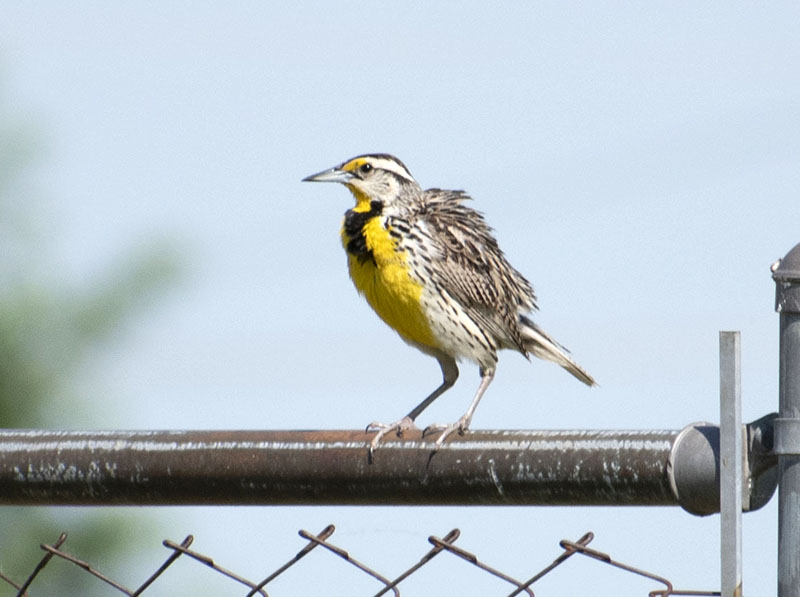
By Grace Huffman
Hello everyone! I’m so excited to begin writing the Bird of the Month column now that John Shackford has retired after many years of writing wonderful articles. I have some big shoes to fill, but I’ll do my best!
I thought I would start out by writing about one of my very favorite birds: the Eastern Meadowlark (Sturnella magna). Some of my earliest birdwatching memories involved drives out to wheat fields in early summer to hear the meadowlarks and Dickcissels as the evenings cooled down. Sadly those fields have since been replaced by a housing development, and the meadowlarks have been forced to live elsewhere.
Eastern Meadowlarks aren’t true larks at all, but rather members of the blackbird family Icteridae. Found year-round across most of Oklahoma, they are about the size of a robin and their shape reminds me of European Starlings, especially when perched on power lines or in flight. Meadowlarks though are much more beautiful than starlings however, with intricate mottling all over the back and wings, a boldly striped face, streaked flanks, and a beautiful yellow throat and belly with a black breastband. Western Meadowlarks look very similar, but they have yellow malars, less white on the tail, and have a more spotted pattern to their flanks.
The most reliable way to tell meadowlark species apart is by sound. Eastern Meadowlarks have s flutelike song full of clear whistles (David Sibley describes it as seeeoaaa seeeeadoo), whereas the song of the Western Meadowlark is described more as a descending warble. Eastern Meadowlarks also have a buzzy call that you’ll often hear as well.
Eastern Meadowlarks nest on the ground in tall grasses, with one male having 2-3 females on his territory. The females will take days to construct their nests, sometimes even building a tunnel entrance and a roof. Clutches consist of 2-7 eggs, and the incubation period is between 13-16 days. Once hatched, the young will leave the nest in about 10-12 days.
While not on the State of North America’s Birds 2016 Watch List, AllAboutBirds.org lists the Eastern Meadowlark as a “common bird in steep decline,” citing that the population declined 89% between 1966 and 2015, largely due to habitat being lost to urban sprawl, overgrazing, and changes to agricultural practices such as early mowing. Pesticides can also harm meadowlarks. Since much of meadowlark habitat is private land, farmland conservation practices are key to saving the species.
If you are wondering where you can see an Eastern Meadowlark for yourself, keep an eye out for one perched on a barbed wire fence or power lines when you’re driving out near pastures and farmland. I often hear them when birding the east side of the Stinchcomb Wildlife Refuge, as there are some open fields just on the other side. Another great place to find them is Mitch Park in Edmond. I was just there on June 1st with Betsy Hacker and we got great photographs of two birds, and heard at least two more.
